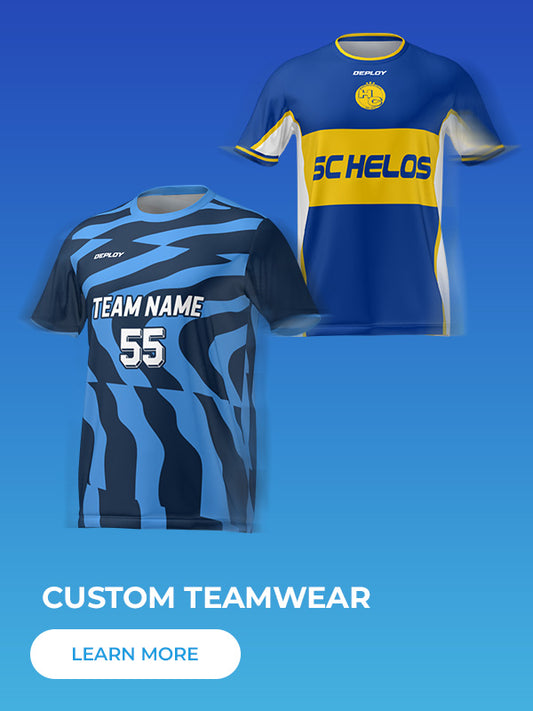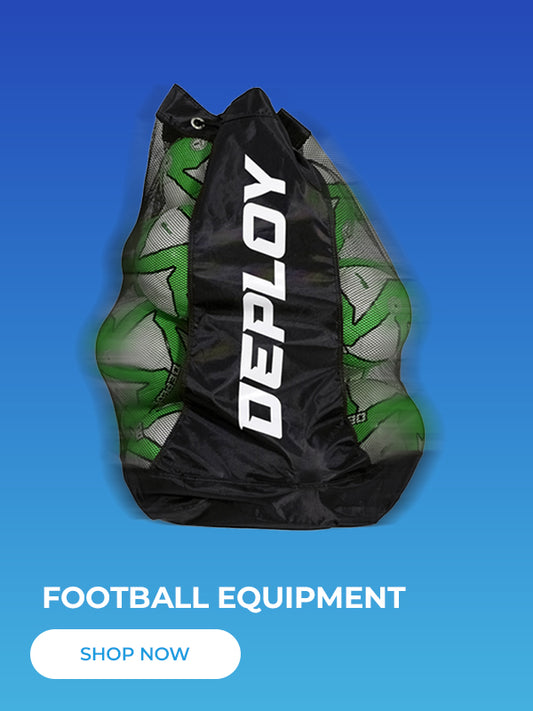The Evolution of the Soccer Ball

Well before becoming the multi-billion dollar, globally recognised sport that it is today, soccer has been around for centuries, spanning countries across the globe. From the ancient Chinese football game called Cuju to Episkyros, a similar Greek game developed in the Dark Ages, people have always enjoyed kicking an object around. While there have been many iterations of football, the soccer ball and how a player interacts with it has always remained the centre of the sport.
Drastically transforming throughout the centuries, from inflated pig bladders to the high-tech instruments we see now, soccer balls have a deep and rich history marked by innovation. Continue reading to uncover the fascinating origin of soccer balls and discover how soccer ball technology has forever shaped the world’s most popular sport.
The Early History of the Soccer Ball: Origin and Innovation
Until the 19th century, soccer balls were made from inflated pig bladders and typically covered with leather to maintain a mostly round shape. However, their size, shape, weight and movement relied on each bladder, causing them to change every game. With a tendency to burst or deflate multiple times in one game, this soccer ball design became rather impractical as the sport turned more competitive, with players continually pausing play to re-inflate the ball.
Then entered Charles Goodyear, who, in 1839, invented vulcanised rubber, which was later used to create a rubber bladder. This durable design was the first major step in creating a standardised size and shape, finally allowing players to control the ball.
Early Years: The Evolution of Soccer Ball Standardisation
In 1863, when the English Football Association officially published the set laws for soccer, there was initially no mention of the ball’s description, allowing the ball’s size, shape, material and weight to rely on each team’s choice. However, upon revising the rules in 1872, the guidelines agreed that a ball must be spherical with a circumference of 27 - 28 inches (68.6 - 71.1 cm).
This has remained a standard for FIFA-approved soccer balls to this day. The weight, however, wasn’t standardised until 1937, when the soccer ball was officially restricted to 14-16 oz (396.89 g - 453.59 g) — a much-needed regulation.
With the size and weight remaining relatively the same throughout the years, the prime evolution of soccer balls can be seen in their material and construction. When mass production commenced in 1888, most balls were still manufactured with a leather coating. Being a highly porous material, leather soccer balls became very dense and heavy when they absorbed water, causing many head and foot injuries. Synthetic paints and non-porous coatings were then created to improve the safety of the game.
The quality of leather soccer balls was also largely inconsistent, with balls made from thinner or lower-quality leathers deteriorating very quickly. During this time, it was common for countries and clubs to have their own preferred soccer balls, which can differ greatly from opponents.
A famous example of this coming to a head was during the 1930 FIFA World Cup grand final between Argentina and Uruguay. They couldn’t agree on which team’s ball to use, so they decided to use Argentina’s in the first half, where they led 2-1, and used Uruguay’s ball in the second half, who came back to win 4-2. With the result commonly believed to be heavily skewed by the ball, this controversial game became a reference point in the history of soccer ball designs, eliciting further standardisation of soccer balls on an international level and contributing to the production of the modern balls we primarily see today.
Modern Soccer Ball Design
Pioneered by American architect Richard Buckminster, his revolutionary design forever changed the history of soccer balls, debuting in the 1970 World Cup. Its main point of difference from the traditional soccer balls was that it switched out the standard stripes and sewn-up laces with 32 panels consisting of hexagons and pentagons. These smaller panels made the ball more spherical than traditional soccer balls, allowing increased control and predictable flight paths.
Buckminster’s ball became the standard in soccer games worldwide, with its black and white hexagonal design being a true symbol of the sport. Sparking a wave of innovation, advancements in soccer ball technology have resulted in many minor adaptations to this iconic design, which we’ll explore below.
Modern soccer balls comprise several carefully thought-out and tested components that holistically help maximise precision, accuracy, speed, flight and bounce. These include:
Material
In the 1980s, manufacturers officially replaced leather soccer balls with synthetic materials to enhance consistency, reliability, and safety. This lightweight alternative is crafted to emulate the cell structure of the leather to maintain a similar flight and bounce, but it has eliminated water absorption. Every soccer ball available for purchase today is coated in synthetic materials.
Colour
Advancing from single, organic colours such as white or brown to the iconic Buckminster black and white ball, its high-contrast design made it easier for fans and players alike to see the ball on the field. Now, while black and white soccer balls are easily accessible, soccer balls are available in a range of colours, typically in bright and high-contrast patterns that ensure players can perceive its motion. Thanks to advancing soccer ball technology, custom footballs are readily available, with the ability to emboss colour schemes, logos, dates and images on the panels.
Panel construction
Commonly known to have a 32-panel construction, this design is trusted for its consistent flight path, providing a steady speed over long distances. While still remaining the most popular choice, in the last couple of decades, there have been a few soccer ball developments, providing players with a few options to choose from according to their preferences. Balls with a smaller number of panels are proven to provide a smoother surface, with more grip to control the ball. At Deploy Football we offer soccer balls with a range of panels, some include:
-
Envision Series III: A FIFA-approved soccer ball with the classic 32-panel construction, designed for professional players.
-
Counter - Elite + Match: With only 12 panels, this hybrid design provides extra aerodynamics and air control.
-
Engage Series II: This junior ball has 26 panels, providing a consistent flight path, making it ideal for skill development and drills.
Hand-stitched vs thermo-bonded soccer balls
Since its debut in the 1970s, traditional soccer balls were hand-stitched, which was the most durable and cost-efficient solution for training and games at the time. In 2006 however, thermo-bonding was introduced, marking a significant moment in the history of soccer balls. Bonding the panels together with heat and pressure thermo-bonding creates a seamless outer surface, allowing the possibility for a smaller number of panels.
While hand-stitched footballs are still available today, they are typically intended for junior-level games or recreational play. From the Ignite Series III, a thermo-bonded 32-panel football for elite-level matches to the Stealth Series II, a 26-panel hand-stitched junior-level traditional soccer ball — you can purchase both kinds at Deploy Football. Learn more about the difference between thermo-bonded and hand-stitched footballs today.
Impact on the Game
As the soccer ball became more developed, refined and optimised throughout the years, the game equally improved in its global standardisation, risk management and skill level. This was no coincidence. With a streamlined design that focused on comfort, safety and performance, the evolution of soccer balls presented opportunities for players to progress further than ever before.
As the beating heart of football, one minor change or modification can make the ultimate difference in the final result, whether good or bad. Players, fans, referees and coaches all rely on a consistent and predictable flight path, and it’s only when this is absent that we notice how essential our modern soccer balls are for performance.
The 2010 World Cup perfectly demonstrates the major effect a soccer ball can have on players’ performance, with the ‘Jabulani’ rolling onto the field boasting a record 8-panel construction. This design, however, rose to fame for the wrong reasons, stirring up complaints as players struggled to predict its trajectory and felt it too unstable to control.
Sustainability and Future Trends
While the traditional soccer ball design is not going anywhere, many future developments are in the works, with a focus on maximising the player and spectating experience and its impact on the climate. As technology continually evolves, it’s clear there is always room for improvement, and with Adidas releasing new designs every World Cup, we don’t have to wait long to find out.
In 2022, the World Cup introduced a match ball with a real-time position-tracking sensor, providing data for players, referees, and fans alike — a major leap in sports technology. This is sure to only be the start of smart soccer balls, paving the way for future developments that will help further streamline in-game decisions, improve spectating engagement, and help players make quick adjustments.
Soccer ball technology now focuses more on sustainability, with new designs made from recycled materials such as plastic bottles. Some manufacturers have also started crafting soccer balls from a single material, allowing the entire ball to be completely recycled. These innovations are helping reshape the future of the sport, encouraging a climate-conscious mindset that doesn’t compromise performance and enjoyment.
Deploy Football: Driving football innovation in every way
Rigorously creating, refining, testing, re-testing and optimising — our diverse range of footballs are meticulously crafted using the finest materials, allowing you to experience the ultimate ball precision and control.
At Deploy Football, every detail matters and each of our soccer balls are designed for a specific purpose and skill level, ensuring you have every chance to make an impact on the field. From elite FIFA-approved soccer balls to durable training ones you can practice your skills on, we use advanced soccer ball technologies and materials to tailor their function to your needs.
Shop our soccer ball collection today and get access to the latest soccer ball trends in Australia. If you’re a club or school, you can also join our Bulk Pricing Program and order your footballs in bulk for a reduced rate.










